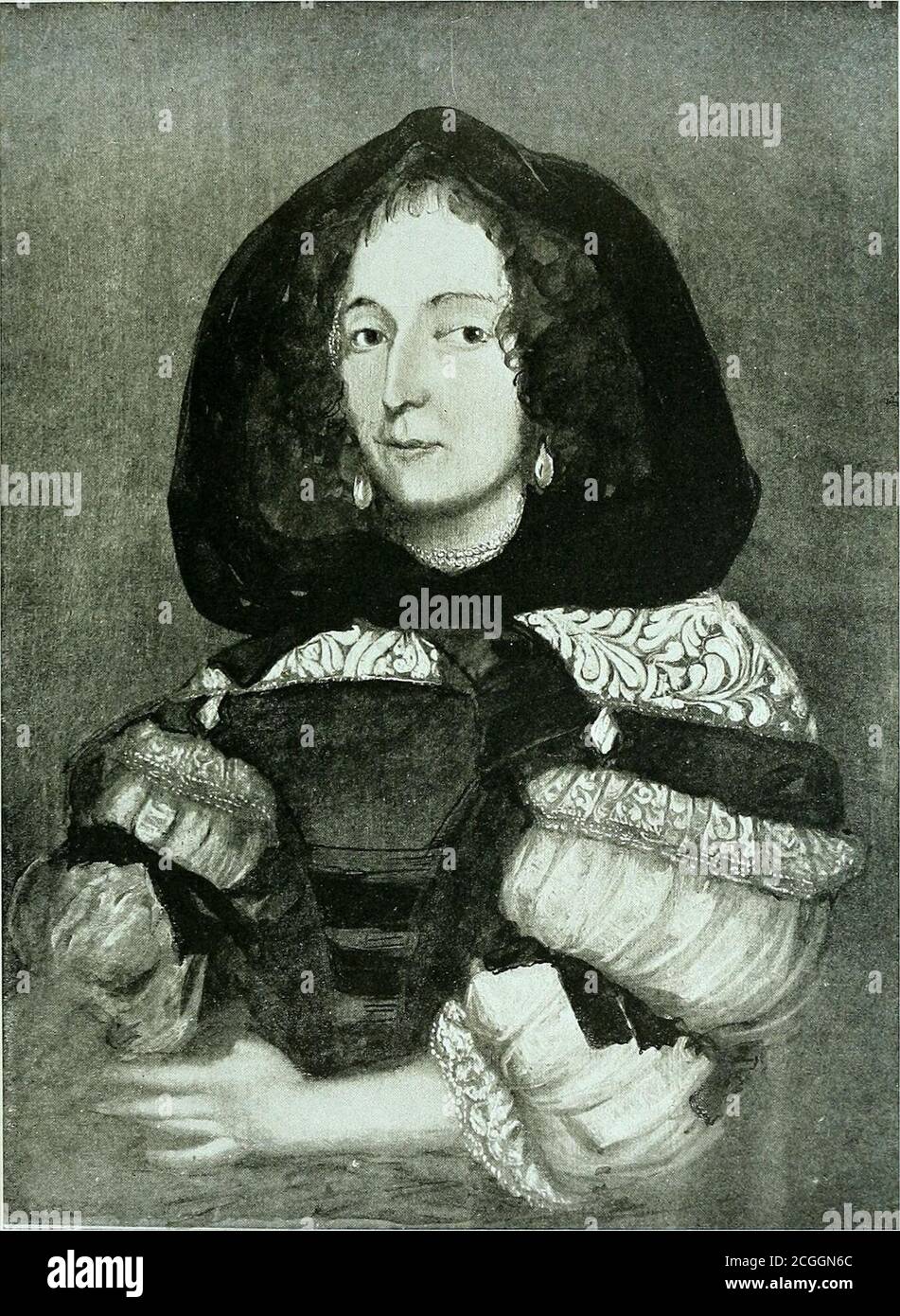. Two centuries of costume in America, MDCXX-MDCCCXX . The whisk was a very interesting and to us apuzzling article of attire, through the lack of pre-cise description. It was at first called the falling-whisk, and is believed to have been simply thehandsome, lace-edged, stiff, standing collar turneddown over the shoulders. This collar had beenboth worn with the ruff and worn after it, and hadbeen called a fall. Quicherat tells that the whiskcame into universal use in 1644, when very low-necked gowns were worn, and that it was simply akerchief or fichu to cover the neck. We have a few side-lig

Image details
Contributor:
Reading Room 2020 / Alamy Stock PhotoImage ID:
2CGGN6CFile size:
7.2 MB (625.6 KB Compressed download)Releases:
Model - no | Property - noDo I need a release?Dimensions:
1353 x 1848 px | 22.9 x 31.3 cm | 9 x 12.3 inches | 150dpiMore information:
This image is a public domain image, which means either that copyright has expired in the image or the copyright holder has waived their copyright. Alamy charges you a fee for access to the high resolution copy of the image.
This image could have imperfections as it’s either historical or reportage.
. Two centuries of costume in America, MDCXX-MDCCCXX . The whisk was a very interesting and to us apuzzling article of attire, through the lack of pre-cise description. It was at first called the falling-whisk, and is believed to have been simply thehandsome, lace-edged, stiff, standing collar turneddown over the shoulders. This collar had beenboth worn with the ruff and worn after it, and hadbeen called a fall. Quicherat tells that the whiskcame into universal use in 1644, when very low-necked gowns were worn, and that it was simply akerchief or fichu to cover the neck. We have a few side-lights to help us, as to theshape of the whisk, in the form of advertisementsof lost whisks. In one case (1662) it is a cambricwhisk with Flanders lace, about a quarter of a yardbroad, and a lace turning up about an inch broad, with a stock in the neck and a strap hanging downbefore. And in 1664 A Tiffany Whisk with agreat Lace down and a little one up, of largeFlowers, and open work; with a Roul for theHead and Peak. The roll and peak were partof a cap.. Mrs. Simeon Stoddard. Dress of the New England Mothers 77 These portraits show whisks in slightly varyingforms. We have the broad Lace lying downin the handsome band at the shoulder; the littlelace standing up was a narrow lace edging thewhisk at the throat or just above the broad lace.Sometimes the whisk was wholly of mull or lawn.The whisk was at first wholly a part of womansattire, then for a time it was worn, in modified form, by men. Madam Pepys had a white whisk in 1660 andthen a cc noble lace whisk. The same year shebought hers in London, Governor Berkeley paidhalf a pound for a tiffany whisk in Virginia. ManyAmerican women, probably all well-dressed women, had them. They are also seen on French portraitsof the day. One of Madam de Maintenon showsprecisely the same whisk as this of Madam Padi-shals, tied in front with tiny knots of ribbon. It will be noted that Madam Padishal has blacklace frills about the upper portion of th